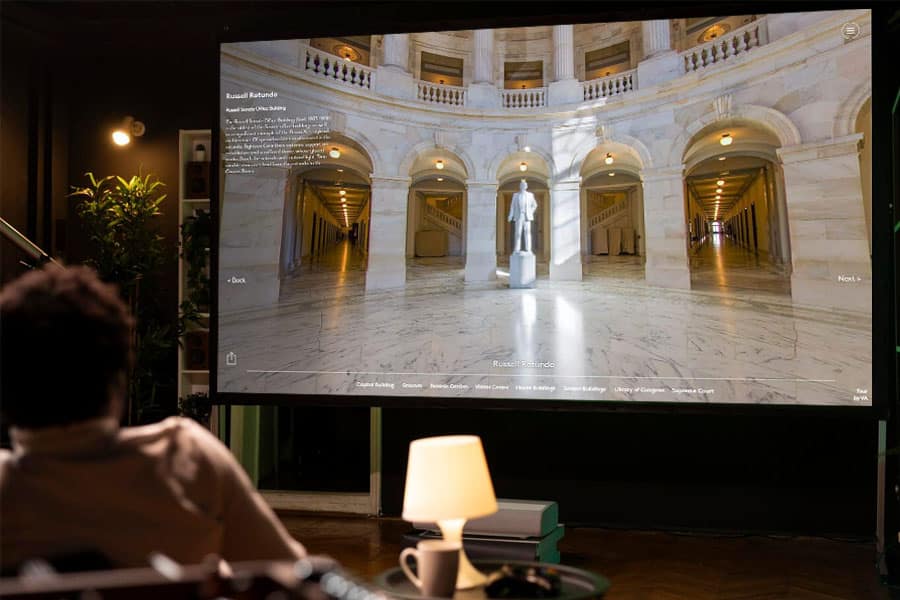
Introduction
LCD projectors have become a cornerstone in delivering immersive visual experiences across various settings, from business meetings to home theaters. These devices have evolved significantly over the years, adapting to the needs of different environments and enhancing how we consume visual content. Initially, projectors were bulky and limited in functionality, but technological advancements have transformed them into versatile tools that offer high-quality visuals. Whether you’re in a classroom, a corporate boardroom, or your living room, LCD projectors provide a dynamic way to display content, making them indispensable in today’s digital age.
Understanding LCD Projector Technology
A. What is an LCD Projector?
At its core, an LCD (Liquid Crystal Display) projector is a device that uses liquid crystal panels to project images onto a screen. Unlike older projection technologies that relied on cathode ray tubes, LCD projectors use liquid crystals to modulate light and create vibrant images. This technology allows for precise control over color and brightness, resulting in clear and detailed visuals.
B. How LCD Projectors Work
The operation of an LCD projector involves a complex light path. It begins with a powerful light source, typically a lamp or LED, which emits light that passes through a series of dichroic mirrors. These mirrors separate the light into red, green, and blue components. Each color then passes through its respective liquid crystal panel, which modulates the light to form the image. The three color images are then combined using a prism and projected through a lens onto a screen. The 3LCD technology, a hallmark of many modern LCD projectors, enhances color accuracy and image clarity by using three separate panels for each primary color, ensuring vibrant and lifelike visuals.
Key Features of LCD Projectors
A. Image Quality
One of the standout features of LCD projectors is their image quality. The brightness of a projector, measured in lumens, is crucial for performance in different lighting conditions. Higher lumens mean better visibility in well-lit environments. Additionally, the three-panel system used in LCD projectors ensures excellent color accuracy, producing vibrant and true-to-life imagery that enhances the viewing experience.
B. Resolution Capabilities
Resolution is another critical factor in delivering detailed visuals. LCD projectors are available in various resolutions, with common options including 1080p and 4K. Higher resolutions provide more detail and clarity, making them ideal for applications that require precise image reproduction, such as home theaters and professional presentations.
C. Connectivity Options
Modern LCD projectors offer a range of connectivity options, including HDMI, VGA, and wireless connections. These options allow users to connect various devices, such as laptops, gaming consoles, and streaming devices, making LCD projectors versatile tools for different applications.
Applications of LCD Projectors
A. Education
In educational settings, LCD projectors enhance classroom learning by providing vivid presentations and interactive content. Teachers can project educational videos, interactive lessons, and digital whiteboards, making learning more engaging and effective.
B. Business Presentations
In professional environments, LCD projectors play a crucial role in delivering clear and impactful presentations. They are ideal for displaying graphs, charts, and multimedia content, ensuring that information is communicated effectively to audiences.
C. Home Theater Systems
For home entertainment, LCD projectors offer immersive experiences for movies and gaming. With large screen projections and high-resolution capabilities, they transform living rooms into cinematic spaces, providing an unparalleled viewing experience.
D. Outdoor Entertainment
LCD projectors are also suitable for outdoor entertainment, such as movie nights under the stars. Their portability and ability to project large images make them perfect for different environments, adding a new dimension to outdoor gatherings.
Benefits of Using LCD Projectors
A. Versatility
One of the primary benefits of LCD projectors is their versatility. They can adapt to various settings, whether at home, in the office, or in a classroom, making them a valuable tool for multiple applications.
B. Cost-Effectiveness
Compared to other projector types, LCD projectors are often more cost-effective in terms of price and maintenance. They offer excellent value for money, providing high-quality visuals without breaking the bank.
C. User-Friendly Operation
LCD projectors are designed for ease of use, with straightforward setup and operation. This user-friendly nature makes them accessible to non-technical users, allowing anyone to enjoy their benefits without a steep learning curve.
Limitations and Considerations
A. Contrast Limitations
While LCD projectors excel in many areas, they do have limitations, particularly regarding contrast. Compared to DLP projectors, LCD projectors may struggle with black levels, affecting the overall contrast of the image.
B. Maintenance Needs
Regular maintenance is necessary to ensure the longevity of an LCD projector. This includes cleaning filters and replacing lamps, which can be an additional consideration for users.
Conclusion
In conclusion, LCD projectors play a vital role in creating immersive visual experiences across various settings. Their ability to deliver high-quality images, coupled with their versatility and cost-effectiveness, makes them a popular choice for many applications. As projector technology continues to advance, we can expect even more innovations that will further enhance the way we experience visual content.
Experience stunning visuals with LCD projectors! Contact Virtually Anywhere today to discover how LCD technology delivers bright, immersive, and high-resolution displays for presentations, entertainment, and interactive experiences. Whether for classrooms, theaters, or virtual environments, LCD projectors bring your content to life. Start enhancing your visuals today!




